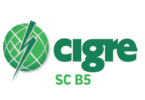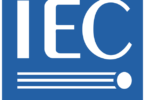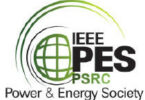IEC 61850 for monitoring data center electrical and other systems
by Tom Berry, Schneider-Electric

IEC TC 57 WG 17 is in charge of power system intelligent electronic device communication and associated data models for microgrids, distributed energy resources and distribution automation.
IEC TC57 WG17 held a kick-off meeting to start work on use cases for a new document describing how to use IEC 61850 for data centers. The first set of use cases are the classic protection and monitoring of the electrical network independently of the voltage level. We expect that IEC 61850 compatible devices will be more readily available at medium or high voltages, and less common for low voltage switch-gear and metering which may need gateway products for protocol translation.
A second set of use cases concerns transfer switching, whether automatic or manual. In some cases, this may be simple switching between redundant circuits and in other cases may involve more complex switching sequences. This is expected to be similar to the well-known operation of public distribution networks with open-ring radial feeders as described in IEC 61850-90-6.
Data centers are critical loads so transfer switching schemes are designed to avoid interruptions. However, it may not always be possible to avoid disturbances so sensitive electronic equipment may be supplied via Uninterruptible Power Supply (UPS) systems that also need monitoring.
Another aspect of energy management in data centers is to monitor the cooling systems that extract the heat. Such systems will include both air cooling and liquid cooling. IEC 61850 already supports some models for fans and pumps associated with the cooling systems for power transformers, but it is likely that this will need extension for the data center context.
The task force will probably take inspiration from the work in progress for IEC 61850-90-3 Edition 2 which defines more comprehensive models for power transformer cooling systems, including the relationships between the control systems and the individual fans.
One of the interesting aspects of modern data centers is that their electrical systems may also include co-located generation and storage facilities. The monitoring and control systems may therefore use some of the data models defined in IEC 61850-7-420 for battery storage, and maybe some of the models defined in IEC 61850-7-410 for thermal power plants.
Data center operators are now also more aware of the impacts of their systems on the local sub-transmission and even the transmission grids. It is becoming more common that the utility power supply contracts will also include obligation for the data center to manage the load during severe weather events or other contingencies.
These aspects will be addressed by other use cases that will describe how IEC 61850 can be used to help with load management and if necessary, load curtailment or switching to isolated micro-grid operation.
These types of use cases are perhaps more market based. IEC 61850 can provide the underlying monitoring and control of the electrical, cooling, and other system components, while the pricing information is used by the client supervisory system as part of its optimization strategy.
Biography:

Tom Berry studied Electrical Engineering at Bath University, UK. For the last 25 years he has worked for Schneider Electric in the UK and France.
Tom has worked on control center projects integrating SCADA systems within dispatch training simulators, transmission and distribution network management systems. He now works “closer to the edge” as a software architect for feeder automation RTUs. He is a member of several IEC TC57 WGs and the editor of IEC TS 62361-102 technical report on CIM-61850 harmonization.








